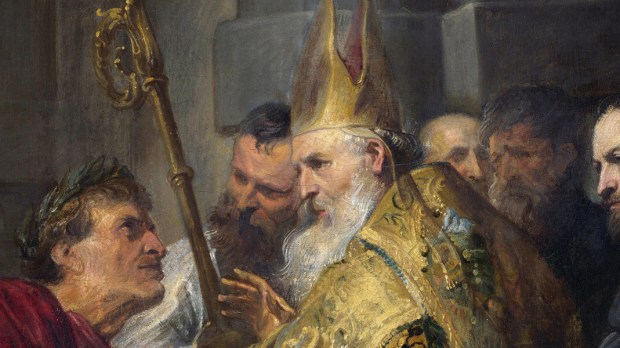Lenten Campaign 2025
This content is free of charge, as are all our articles.
Support us with a donation that is tax-deductible and enable us to continue to reach millions of readers.
In most cases, when a saint is recognized in the Catholic Church, their feast day is assigned to the day of their death. This day would technically be the anniversary of their entrance into Heaven.
It would be their “heavenly birthday.”
In the case of St. Ambrose, he died on Good Friday, April 4, 397, but the Church does not honor him on April 4.
Why is that?
As with St. John Paul II, who died on April 2, the Church decided to move both saints outside of the Lenten season, as it would impede a proper celebration of their life.
April 4 is frequently during Holy Week and a feast for St. Ambrose would be superseded.
What’s unique is that the Church decided to move St. Ambrose’s feast to December 7, which is the anniversary of his consecration as bishop.
He was popularly elected to be a bishop and had to be baptized before the ordination, as the Catholic Encyclopedia details:
Proceeding to the basilica in which the disunited clergy and people were assembled, [St. Ambrose] began a conciliatory discourse in the interest of peace and moderation, but was interrupted by a voice (according to Paulinus, the voice of an infant) crying, “Ambrose, Bishop.” The cry was instantly repeated by the entire assembly, and Ambrose, to his surprise and dismay, was unanimously pronounced elected. The saint finally acquiesced, received baptism at the hands of a Catholic bishop, and eight days later, December 7, 374, the day on which East and West annually honor his memory, after the necessary preliminary degrees was consecrated bishop.
St. Ambrose’s feast day is unique in this regard and recalls his remarkable episcopal ministry.


